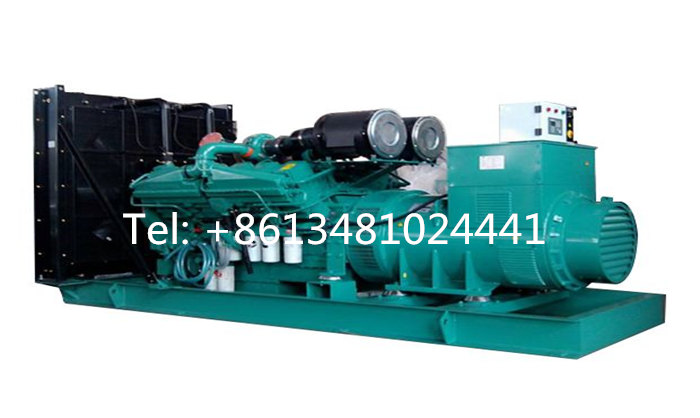Common faults and troubleshooting methods of diesel generator
Diesel generator is a kind of common standby power supply in our work and life, mainly used in highway toll stations, highway long tunnels and various enterprises and institutions. Diesel generators can provide us with stable and reliable power supply, so regular maintenance can improve the service life of diesel generators and give full play to the working efficiency of diesel generators.
In order to further let everyone learn about diesel generators, the following is to explain the troubleshooting and maintenance of common faults of diesel generators, in order to further improve the efficiency of diesel power generation and improve the business skills of equipment maintenance personnel.
1. The engine misfires or the engine stalls at low speeds. Common causes include low fuel pressure, air ingress into the fuel system, fuel injector failure, etc.
Exclusion:
(1) Make sure there is fuel in the tank. Look for leaks or severe bends in the lines between the fuel tank and the fuel transfer pump. Check for air in the fuel system, sticky, stuck or damaged fuel bypass valve, check fuel pressure. At full load speed, the outlet pressure of the fuel transfer pump must be a minimum of 415 kPa. The pressure in both fuel manifolds must be 415 to 450 kPa. If the fuel pressure is lower than above, install a new filter. If the fuel pressure is still low, check the fuel transfer pump and the fuel pressure regulating valve at the fuel manifold.
(2) Find out where the air leaks into the fuel system and repair it. If air is present in the fuel system, it usually enters through the suction side of the fuel transfer pump.
(3) When the engine is running at low speed, the temperature of the exhaust manifold nozzle can be used as an indication of the injector condition, and the low temperature of a certain exhaust manifold nozzle is a sign that there is no fuel injected into the cylinder. An excessively high temperature at one of the exhaust manifold ports may be a sign that too much fuel is being injected into the cylinder or it may be caused by a faulty injector.
2. The engine is underpowered. Common causes include poor fuel quality or water in the fuel, low fuel pressure, air leakage in the intake system, etc.

Exclusion:
(1) Remove the fuel in the fuel tank, replace it with a new fuel filter, and inject clean fuel.
(2) Ensure that there is fuel in the fuel tank and check whether the oil pipe between the fuel tank and the fuel transfer pump leaks or bends. Check for air in the fuel system, stuck fuel bypass valve, and check fuel pressure. At full load rpm, the minimum outlet pressure of the fuel transfer pump must be 415 kPa and the pressure in both fuel manifolds must be 415 to 450 kPa. If the fuel pressure is lower than above, replace the filter. If the fuel pressure is still low, check the fuel pressure regulating valve on the fuel transfer pump and fuel manifold.
(3) Check the pressure in the intake manifold to see if there is a blockage in the air filter.
3. Excessive vibration after engine start. Common causes are shock absorber loosening or failure, engine mount loosening, driven equipment misalignment or imbalance, etc.
Exclusion:
(1) Check whether the shock absorber is damaged and tighten the bolts. If the bolt holes of the shock absorber are damaged, replace them with new ones.
(2) Check alignment and balance, and correct if necessary.
4. The valve train is noisy. Common causes are valve spring, spring lock clip damage or valve lifter damage or wear, insufficient lubrication and so on.
Related links:How to maintain diesel generators?
Reveal the mystery of diesel generators and their purchase guide
Mastering Your Home: Installing a Triple Light Switch
Yr Slip Ring Motor for Sale
How Does Synchronous Company Enhance Business Efficiency?
Why Use an Electric Milk Frother?
Top Benefits of Using Explosion Proof LED Lights in Hazardous Areas
Exclusion:
(1) Replace new parts where needed. A damaged lock clip can cause the valve to sink into the cylinder, which will cause more damage.
(2) Check the lubrication in the valve chamber. When the engine is running at high speed, the oil should flow in a large amount, while at low speed, only a small amount of oil flows in. The oil passages (especially the passage of conveyor oil to the cylinder head) must be clean.
5. There is coolant in the oil. Common causes are oil cooler core damage, cylinder head gasket or water seal damage, cylinder head fracture, etc.
Exclusion:
(1) Replace with new oil cooler core and oil filter, and inject clean lubricant.
(2) Check the protruding part of the cylinder liner flange, install a new water seal in the diaphragm, and tighten the bolts for fixing the cylinder head according to the technical specifications. Replace with a new cylinder head.
6. Generator overheating. Common causes include engine overload, ventilation duct blockage, etc.
Exclusion:
(1) caused by long-term overload of the engine, should always pay attention to the instrument on the dial such as: power, power factor, current do not overload.
(2) The ventilation duct is blocked, and the interior of the generator should be thoroughly blown.
7. Too much white or blue smoke. Common causes are too much oil in the engine, piston ring wear, turbocharger oil seal damage, etc.
Exclusion:
(1) Pull out the oil dipstick and check the oil level. When the oil is too much, drain the excess oil.
(2) Excessive wear of piston rings causes excessive clearance, oil entering the combustion chamber to participate in combustion will cause blue smoke, and new piston rings need to be replaced.
(3) Check whether there is oil in the intake manifold and repair the turbocharger if necessary.Learn more



